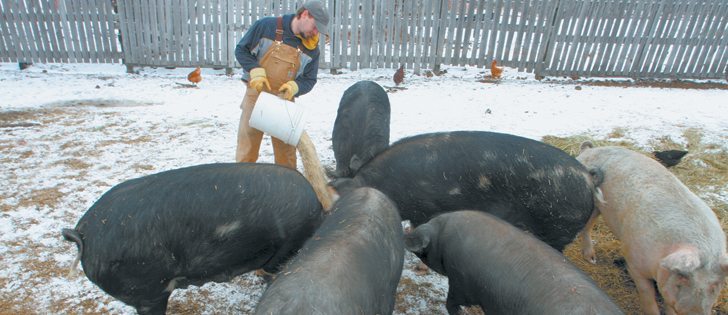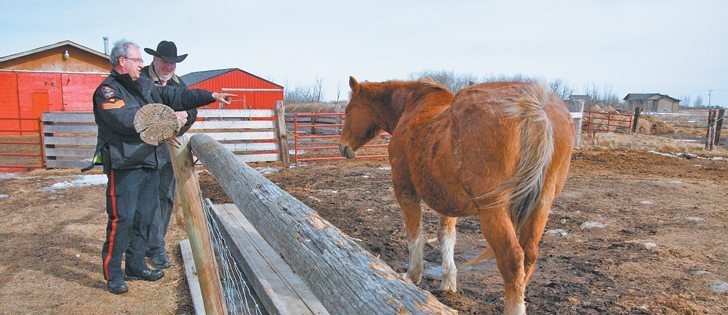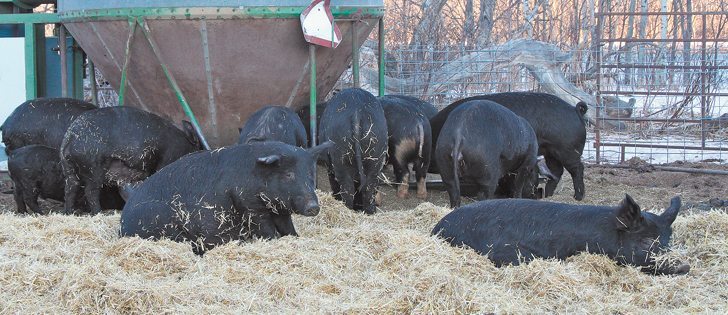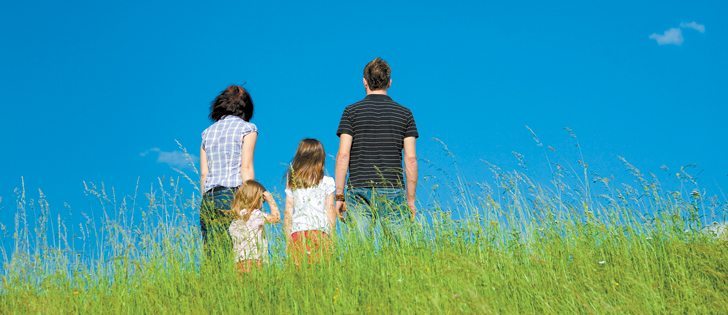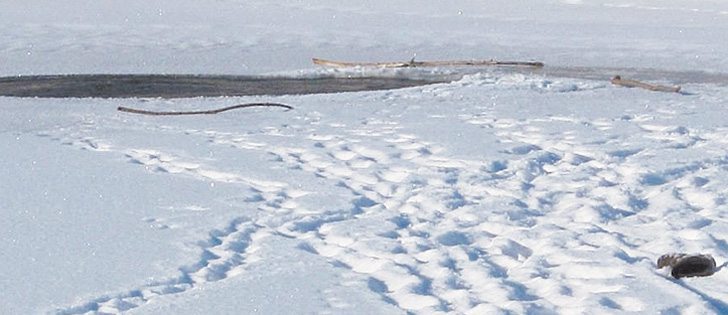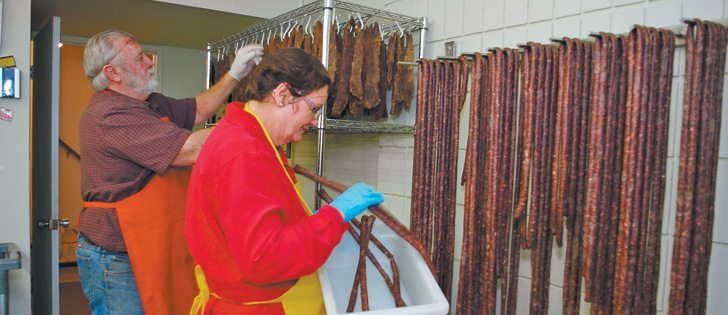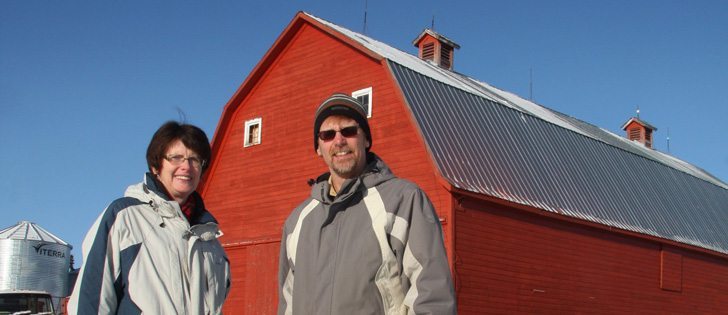HARDISTY, Alta. — Stepping onto the Pure Country Food Inc. farm is like stepping back in time.
Darcy Goodrich and his eight-year-old son, Ronan, fill pails of grain from the chop house and haul the buckets on a sled to the pigs and chickens.
Ronan collects eggs that will be washed and sold to customers. The mostly Galloway cattle are still grazing in the pasture, but there are plenty of other regular farm chores to be done each day.
Pigs go out to the pasture in summer to be raised and finished on grass.
Read Also

Canada’s rural crime problem far from fixed
Farmers on the Prairies are worried about crime rates and safety, but an effective approach to meaningfully reduce rural crime remains out of reach so far.
This year, there are plans to work with another family, who will raise the Goodriches’ pasture-raised chickens and free up more time for the central Alberta family to direct market the animals.
“It’s fairly labour intensive, but it’s the right way to raise healthy animals and produce nutrient-dense food,” Darcy said.
“We won’t do it any other way. For us, it has to be principle before profit.”
With no tractor and a minimum of equipment, he is the first to admit they are not travelling the same path as other farmers.
“I am a firm believer agriculture has to change to survive,” said Darcy, who grew up on the family farm raising livestock the more traditional way. The couple is now in the process of buying the farm from Darcy’s parents.
By focusing on the soil, Darcy and Candace believe the quality of feed from their land is better and the animals are healthier, as are the people who eat the food.
After taking a holistic management course in 2006, the couple deliberately took themselves out of the conventional cattle markets.
They shifted from sleek Gelbvieh to hairy Galloway cattle, from grain to grass fed and from traditional beef markets to direct marketing their own finished beef.
“We feel very good about what we’ve done. We feel this is a sustainable way and we don’t require a lot of equipment,” said Candace. “We really feel grass finish is the way people are going to go.”
At one time, the Galloway herd was as high as 300, but it is now down to a more manageable 60 to 100 cows, plus 40 to 60 hogs and 100 to 200 chickens, depending on the year.
The combination of fewer numbers and greater variety allows the family to concentrate on caring for and marketing the animals while having a balanced life with their children, who are home schooled.
“I have no desire to be the Wal-Mart or Costco of eco-farming. To me, that would go against the spirit of it,” said Darcy, who wants to develop a network of other like-minded farmers to work together.
“The real potential is farmers working together to empower each other and to grow better food and feed more families.”
Choosing to leave the more comfortable path of conventional agriculture and strike out in an opposite direction hasn’t been easy financially, said Candace. The holistic management courses emphasize building a profit into every aspect of farming, but with three young children at home and a new business in town, it’s not an easy feat to accomplish.
“I do believe we haven’t implemented the financial aspects of holistic management,” said Candace, whose goal is to implement stricter financial planning.
Strict rules around processing and selling meat also add additional costs for direct marketers and small farmers, said Darcy.
With price breaks for larger numbers for almost everything in farming, the regulations encourage farmers to get larger rather than smaller. Those rules make it tough for small farmers to make a living, he said.
“We can’t compete with commodity markets and I don’t want to.”
Despite the continual struggles with farming and a new business, Candace said they believe that what they’re doing is right.
“We have all the confidence in the world what we do is right and it’s the healthiest food we can grow.”
The customers who buy their pork, beef, chicken and eggs also believe what the Goodriches are doing is right. About two-thirds of the produce is sold to consumers, mostly in Edmonton and Sherwood Park, while the rest is sold through their general store, The Station, located in the newly renovated Hardisty railway station.
Having a store in which to sell produce allows the couple to stay connected with the community and their customers.
The family learned through the grapevine that the old Canadian Pacific Railway station in Hardisty would be torn down.
After plenty of phone calls and perseverance, they got the go ahead from CPR to buy and move the old station. With the help of Darcy’s parents, Ed and Lori, and Darcy’s cousins, Lorna and Dwight Granger, the couple bought the train station in 2008, moved it to its new location and renovated it as the general store and meeting room.
“Being in town is a connection to other people. I find a lot of really good connections come through the door,” said Candace, who is at the store three days a week.
Lori and Lorna operate the stores the other days.
The old red paint was sandblasted off the exterior and the interior gutted and renovated. It opened for business in 2010.
“We wanted to try and maintain the integrity and look of the building yet still modernize it.”
They built a wrap-around porch with the help of a friend, where they hope to host musicians or add patio furniture.
Half the train station is an old-fashioned general store selling clothes, food, books, crystals and other knickknacks.
“We try to listen to what the community wants to see. It’s a general store, you never know what we’ll have,” she said.
The other half of the building was turned into a meeting room decorated with original Hardisty train station memorabilia.
A massive stone fireplace anchors the room, decorated with train mementos. Community members donated original train artifacts, old station lamps and other local antiques.
“To me, we really look at the train station as a community thing,” Candace said.



